KEEP UP WITH OUR DAILY AND WEEKLY NEWSLETTERS
PRODUCT LIBRARY
the apartments shift positions from floor to floor, varying between 90 sqm and 110 sqm.
the house is clad in a rusted metal skin, while the interiors evoke a unified color palette of sand and terracotta.
designing this colorful bogotá school, heatherwick studio takes influence from colombia's indigenous basket weaving.
read our interview with the japanese artist as she takes us on a visual tour of her first architectural endeavor, which she describes as 'a space of contemplation'.
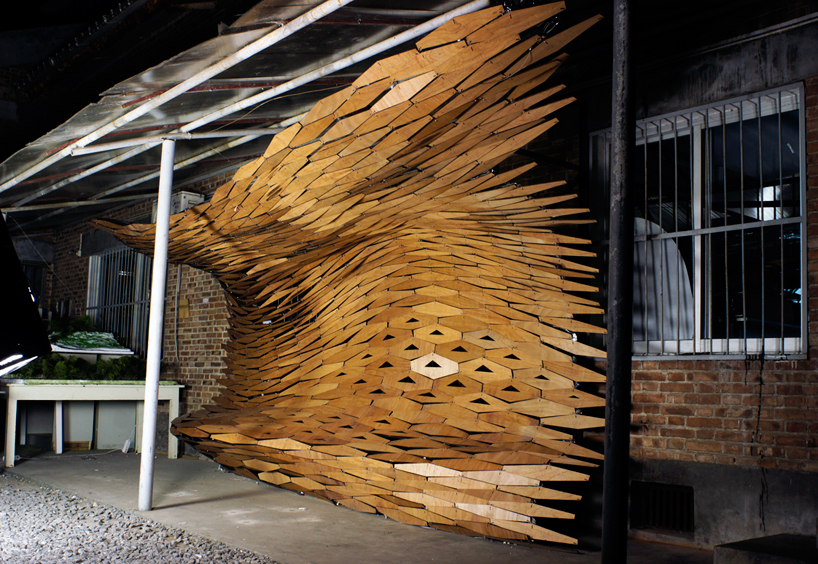
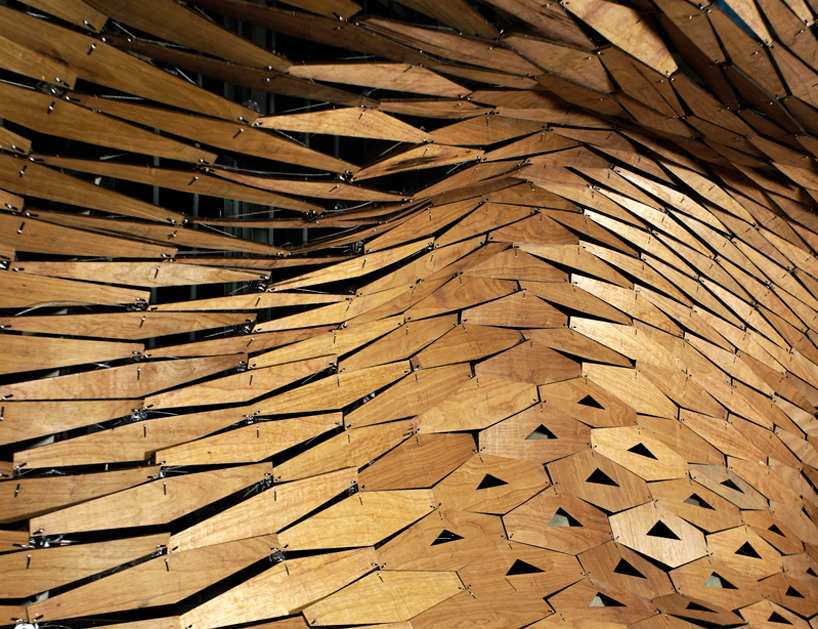 detail view of the laser-cut panels that compose the combination canopy/bench
detail view of the laser-cut panels that compose the combination canopy/bench the DAL workshop brings together invited architecture professionals and students to work around a common theme, this year ‘aggregated porosity’
the DAL workshop brings together invited architecture professionals and students to work around a common theme, this year ‘aggregated porosity’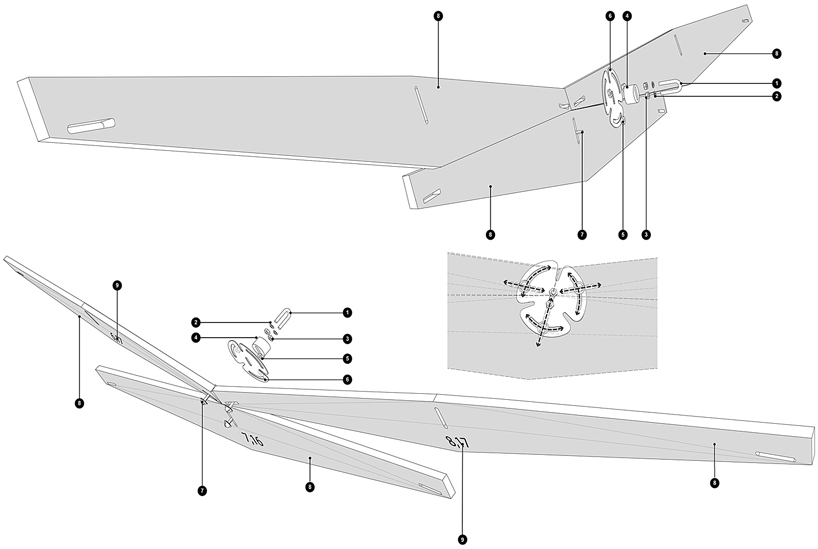 technical diagram of the joint and panels 1 – u clamp 2 – 0.2mm washer 3 – nut for securing cables 4 – 9mm MDF spacer 5 – nut for securing panels 6 – customized joint plate 7 – bolt for securing panels 8 – laser-cut plywood panel 9 – panel numbering to assist in assembly
technical diagram of the joint and panels 1 – u clamp 2 – 0.2mm washer 3 – nut for securing cables 4 – 9mm MDF spacer 5 – nut for securing panels 6 – customized joint plate 7 – bolt for securing panels 8 – laser-cut plywood panel 9 – panel numbering to assist in assembly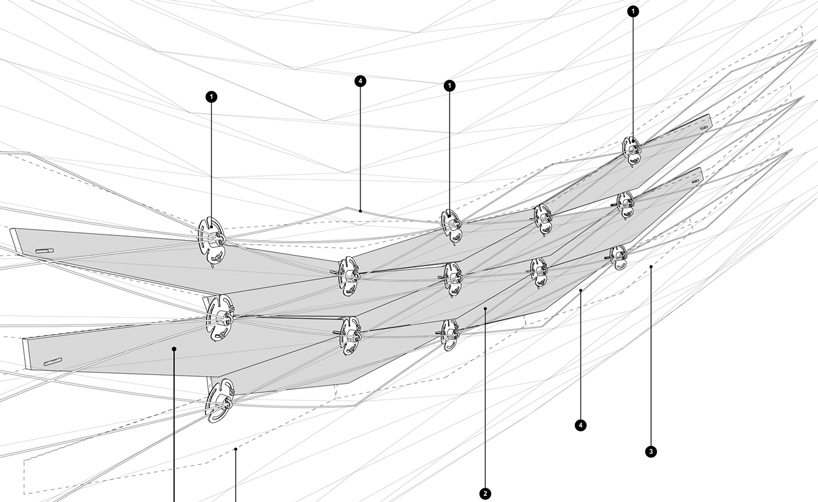 technical diagram of construction detail customized joint, laser cut panels, tensile cable net
technical diagram of construction detail customized joint, laser cut panels, tensile cable net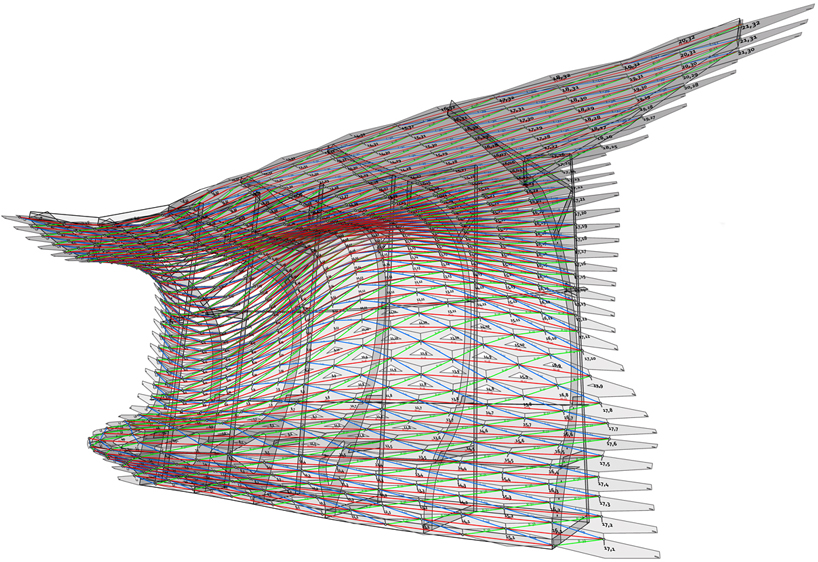 layers of construction: steel frame, wooden grid, triangular mesh of steel cables, hexagonal panels
layers of construction: steel frame, wooden grid, triangular mesh of steel cables, hexagonal panels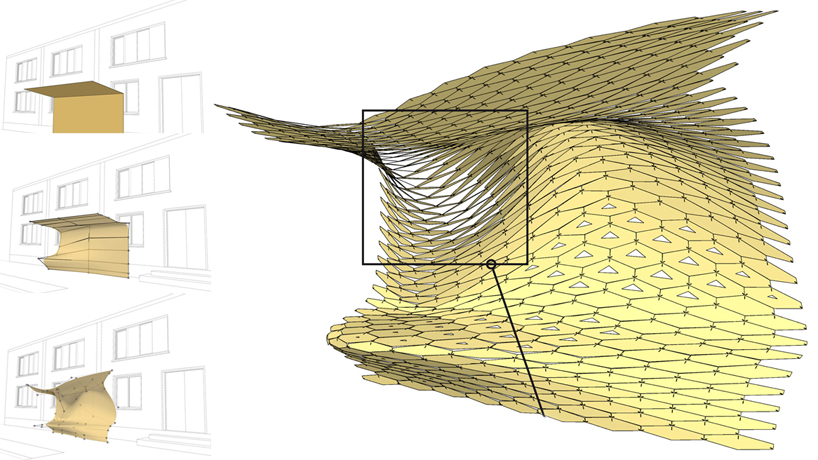 left: three progressive stages of design – responding to need for shade; incorporating bench; creating a dynamic, fluid form right: rendering of canopy
left: three progressive stages of design – responding to need for shade; incorporating bench; creating a dynamic, fluid form right: rendering of canopy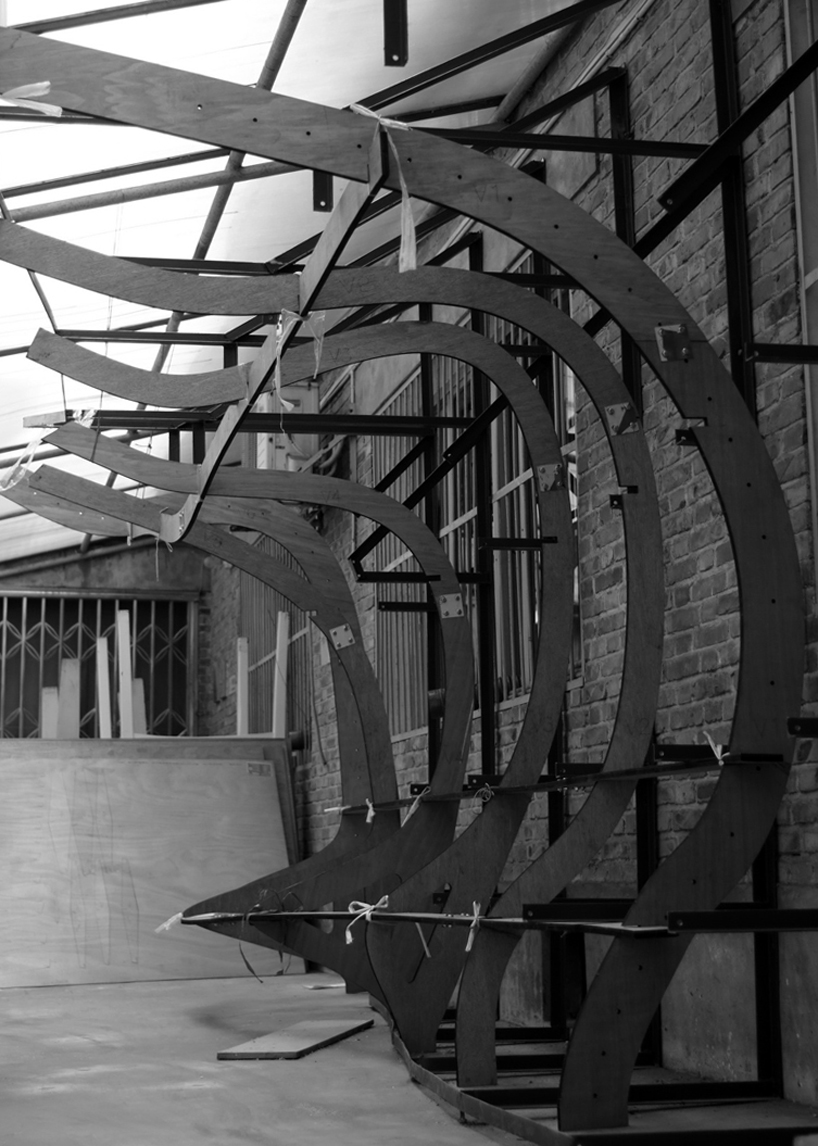 construction photo, wooden struts
construction photo, wooden struts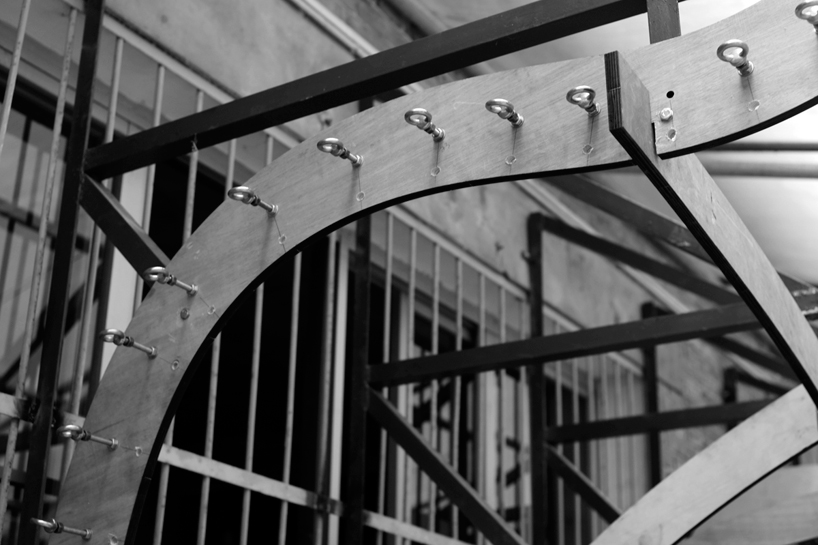 construction photo, detail on wooden grid and steel frame
construction photo, detail on wooden grid and steel frame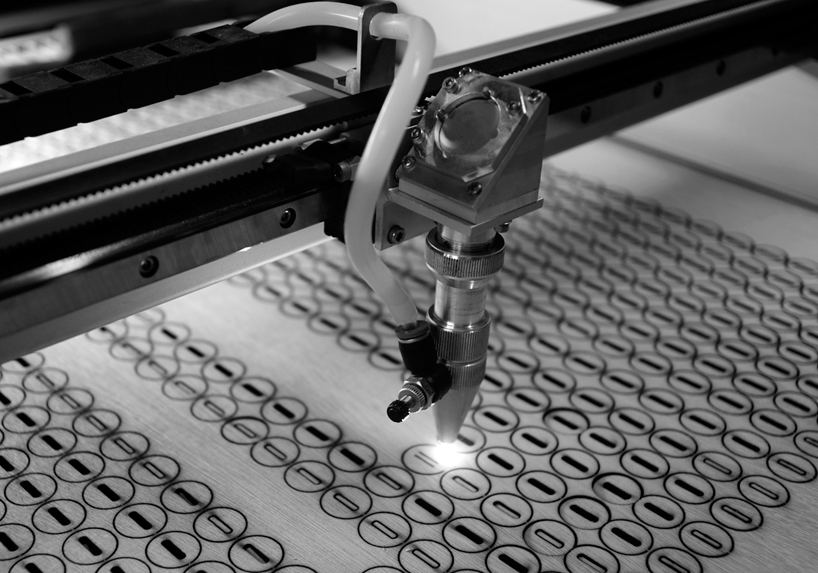 construction photo, laser-cutting the plywood
construction photo, laser-cutting the plywood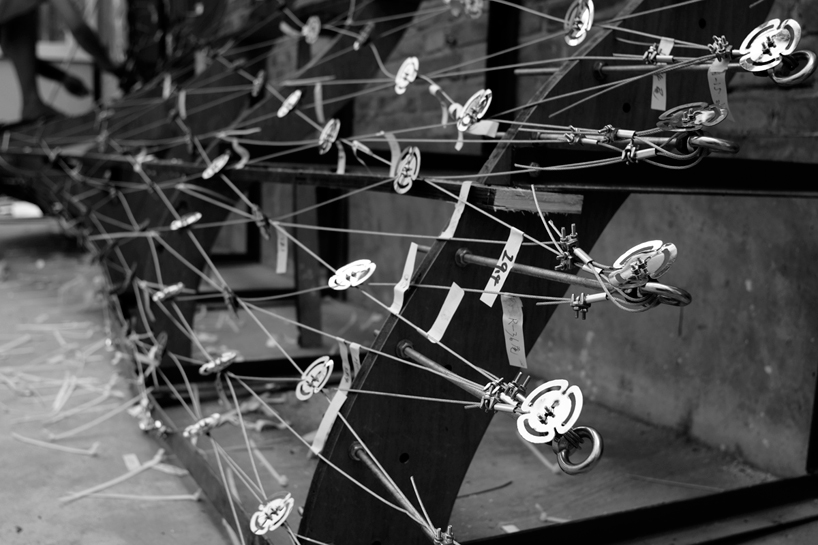 construction photo, detail on wire mesh and joints
construction photo, detail on wire mesh and joints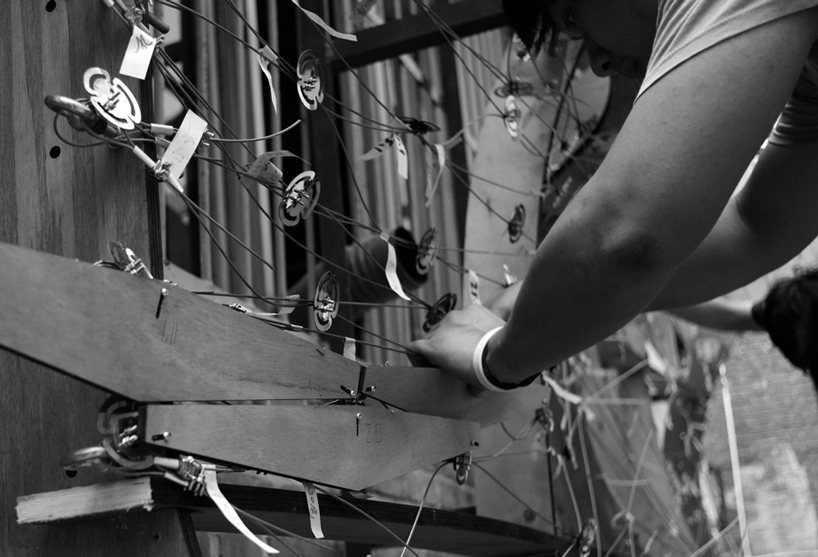 construction photo, affixing the hexagonal panels to the structure
construction photo, affixing the hexagonal panels to the structure


